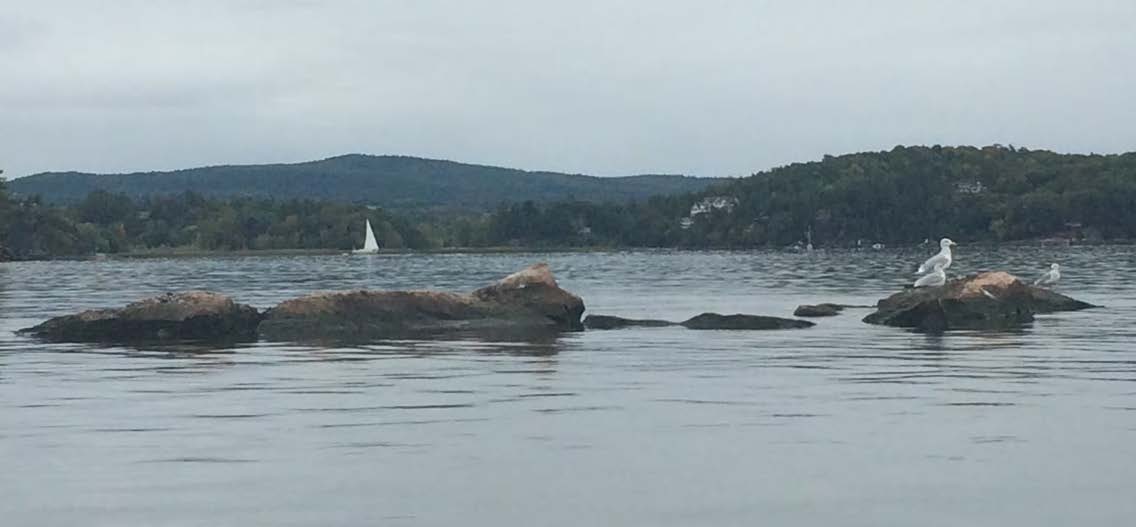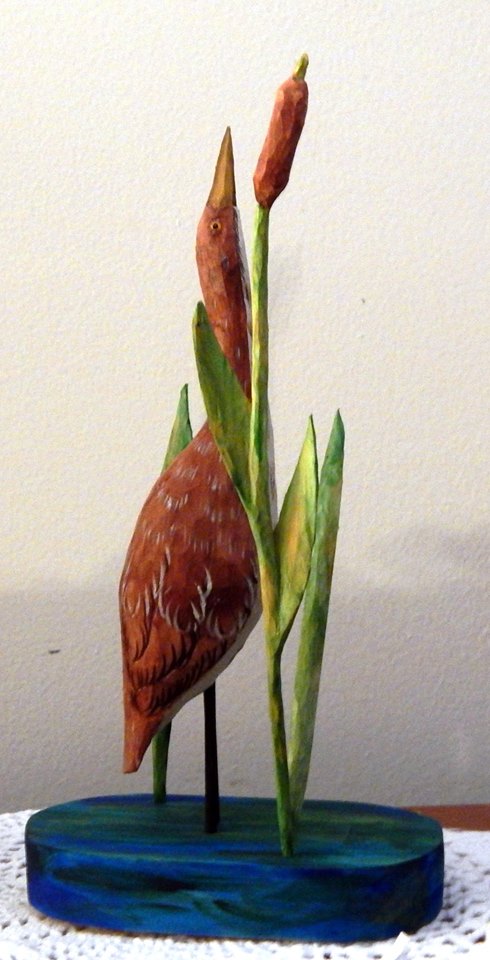Guest post by Kari Jo Spear, Photographer, Novelist, and Daughter of Bob Spear
This post appeared first in our Fall Spring 2016 issue of Chip Notes.
Reprinted by permission.
One family story from before I was born has always haunted me. I could never get my head around the fact that my quiet, slow-moving father had once owned a speedboat and raced around Lake Champlain in it. But as to why he no longer owned it by the time I was old enough to remember has become part of the mists of the past.
When I asked him, all he would say was, “I hit a rock.” End of discussion. End, I assumed, of the speedboat. This helps explain why my father never had anything good to say about the smelly, gas-wasting, pollution-causing, noisemakers that went so fast you couldn’t tell a ring-billed from a herring gull.
My mother didn’t like to talk about the rock and boat incident much either, but her version was more detailed than his. According to her, it happened one summer evening in Malletts Bay, near my family’s camp. She, my father, my uncle Frank, my grandmother, and one of my great aunts were out in the boat, enjoying the sunset. The 1950’s style boat was made of dark wood and had two bench seats running across the middle with a steering wheel in the front. My father was operating it.
Suddenly, according to my mother, there was a jolt. The boat’s speed and direction didn’t change. The boat just no longer had a bottom. She could see the water rushing by below her feet, as if the floor had been peeled away by a giant can opener. She said my father looked down, killed the engine, and the boat promptly sank out from under them.
Yup, hit a rock.
Fortunately, no one was hurt. Someone rescued them from the water as it was getting dark and returned them, tired and wet, to camp. The waiting relatives had become frantic, knowing that something had happened, but not what.
Recently, I emailed my uncle Frank, who now lives in Nevada, to see what he remembered about the accident. He gave me the most detailed account I’d heard about what he called The Great Boat Wreck Caper. He described a late afternoon ride in the family’s new boat along the shore of the bay, where they had slowed down to look at the trees and cliffs. (I suspect there might have been “looking for cliff swallows” too, but that’s just speculation.) Then,he said,
“Bob, who was driving, picked up speed, and as we hit full speed we hit the submerged rock or ledge. After a few seconds of bewilderment, we looked down and saw the water pouring into the boat through a large gash in the bottom. It quickly became evident that we couldn’t stay in the boat, so we abandoned ship.”
The boat sank by the stern, looking “exactly like the pictures of ships that had been torpedoed.” But it didn’t, as the other stories had implied, go straight to the bottom. It remained floating with the bow just above the surface. The survivors weren’t picked up immediately by a rescue boat. They actually swam back and stood on the guilty iceberg (I mean, rock) while someone on shore launched a boat and came out to them. (I am sorely tempted to make a comment about a flock of gulls vying for positions, but I won’t.) Once they were aboard, the rescuer towed the disabled boat to the nearest beach, where they removed the motor. Then the rescuer returned the bedraggled shipwreck survivors, along with the motor, back to camp. My uncle stayed up late disassembling and drying it.
My uncle went on to write, “The next morning, Bob woke me up early so we could take his canoe back to where we had beached the boat. We hooked a line to it and towed it back to camp.” (I sense this might have been the moment when the canoe rose to the top of my father’s list of worthwhile boats.) Then he and my uncle returned (again by canoe) to the site of the disaster one last time to dive for loose articles that had fallen out of the boat, including my uncle’s wallet, which had gone spiraling down to the bottom of the lake like the Heart of the Ocean. (Yes, he found it, along with his car keys, still in the pocket of a pair of pants he’d thrown in the boat at the last minute.)
My uncle finished with, “Over the next few days Bob worked out that we could screw a plywood patch into the hole in the bottom and cover it with fiberglass. It didn’t look great but it worked fine so we were back in business.” (Add speedboat repair to my father’s resume.) Still, I infer that the family’s interest in speedboats had ebbed, and my uncle told me that the boat was sold a few years later.
But even though my father didn’t talk about those days much, I can remember him pointing to a marker on the map of the lake that hung on the camp wall. The mark denoted a dangerous shallow spot in the middle of otherwise deep water. My father smiled a little and said, “Yep, I found that one.”
Like my father, I have chosen quiet, reflective paddling over speed. A few weeks ago, I paddled my trusty kayak deeper into Malletts Bay than I’d ever gone before. The lake level was at a near record low. As I came around a point of land, I saw a dark ledge of rock breaking the surface. Next to it was a white buoy with the word “DANGER” in red on the side. And I realized what I must be looking at. The infamous rock ledge that had torpedoed my father’s boat was actually above surface for the first time in years.
I paddled around it and photographed it with my cell phone. Then I just drifted a while and listened to the gurgle of water and the cries of the gulls, and looked deep into the reflections on the water’s surface.

Kari Jo Spear‘s young adult, urban fantasy/romance novels are available at Phoenix Books (in Essex and Burlington, Vermont), and on-line at Amazon and Barnes and Noble.
Previous posts in this series:
Part 1: The Early Years
Part 2: The Pre-teen Years (or, Why I’m Not a Carver)
Part 3: Something’s Going On Here
Part 4: The Summer of Pies
Part 5: My Addiction
Part 6: Habitat Shots
Part 7: Growing Up
Part 8: My Dead Arm
Part 9: Remembrance: Tales of My Father
Part 10: Canoe Lessons
Part 11: Battlefields








